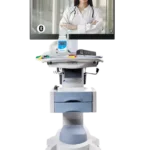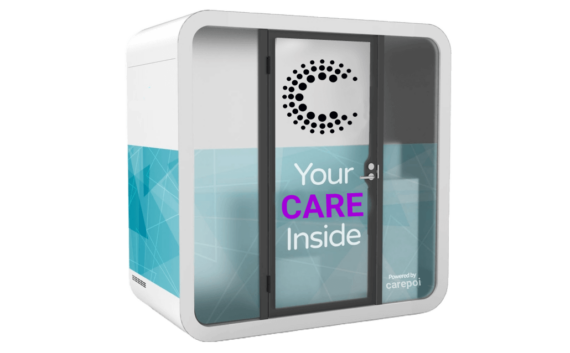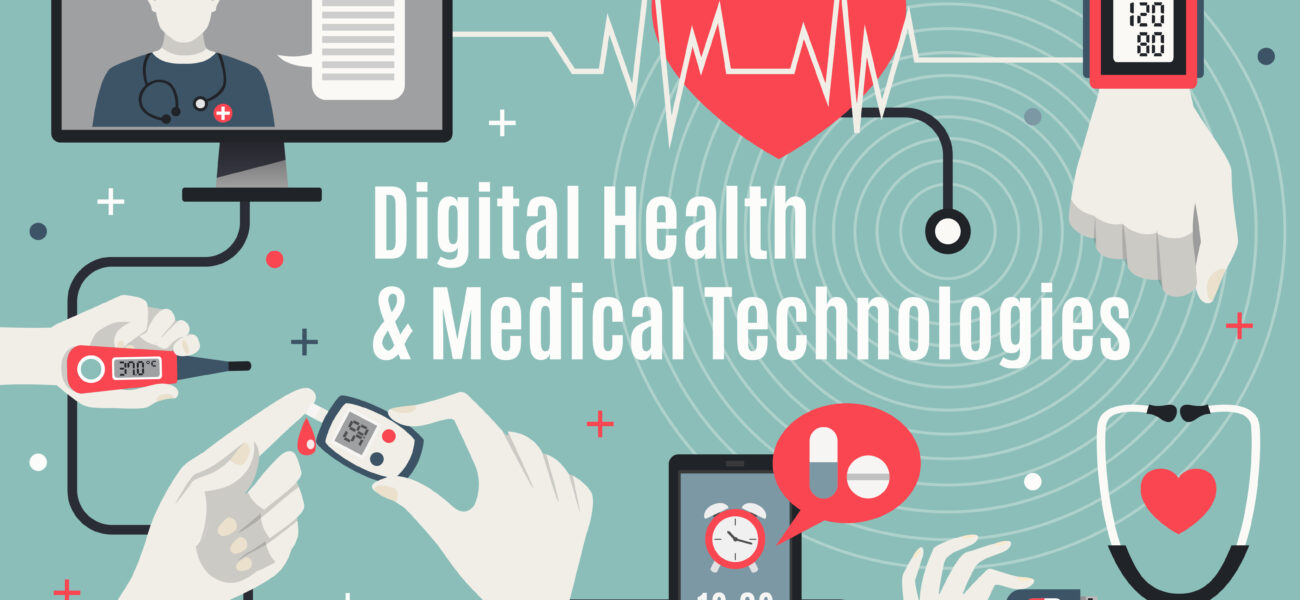CAREPOI is testing a new way to deliver medical care remotely. They mobilize Care-in Points of Interest (POI stations) to reach patients who may be too far away, short on time, or facing challenges that prevent traditional doctor visits.Active and healthy people can walk into a high-tech POI to access medical services. They can connect with physicians through private, high-definition videoconferences.
The POI stations feature telemetry devices, interactive medical tools, and touchscreen panels. These stations link users with medical providers. They are beneficial for individuals of all ages and incomes. POIs can operate anywhere, anytime, and accommodate people from diverse countries and cultures. Built with smart films on all four walls, these POIs enhance privacy. They represent one way CAREPOI meets patient needs in everyday settings. The setup allows for extended hours and flexibility for patients who cannot wait for a traditional appointment. This innovative CAREPOI project allows patients to approach the POI station without an appointment and receive treatment for minor health conditions.
CAREPOI is the first organization to offer this telecare method. Combined with cloud-based SaaS, it delivers healthcare in a modern way. This approach could eventually expand to cover cardiology and other specialties. Additionally, CAREPOI is testing this model in workplaces to enhance users’ healthcare options.
DURUS DH-600
The DURUS DH-600 serves as the entry-level model in the CAREPOI telemedicine lineup. It addresses basic healthcare needs, particularly in underserved areas, making it vital for bringing medical care to locations lacking traditional healthcare services.

Key Features:
- Telemedicine Station
The DH-600 integrates with ATLAS™ and P2PV, enabling high-quality, real-time video consultations with healthcare professionals. Patients can receive certified medical advice without needing to visit a hospital or clinic. - Medical Device Integration
A standout feature allows the DH-600 to accommodate various medical devices, such as a 12-lead ECG. This enables doctors to monitor heart activity remotely, which is crucial for diagnosing and managing cardiovascular conditions. Healthcare providers can add additional diagnostic tools to meet specific healthcare needs. - Placement in Public Spaces
The DH-600 features a design suitable for placement in convenient locations like pharmacies, schools, and retail stores. This ensures easy access to healthcare services and reduces the need for long-distance travel.
Use Cases:
The DURUS DH-600 proves particularly valuable in regions with limited healthcare infrastructure. By situating these stations in public places, patients can access essential healthcare services without visiting traditional facilities. This setup benefits rural areas where healthcare options often remain limited. It also prioritizes privacy, making it ideal for assisted living facilities and group homes.
Potential Impact:
The DH-600 model transforms communities that lack consistent healthcare services. It offers a low-cost, high-tech solution deployable in various locations, allowing for widespread access. As telemedicine demand grows, the DH-600 bridges the gap between patients and healthcare providers, especially in underserved regions.
DURUS DH-800
Building on the DH-600, the DURUS DH-800 provides advanced diagnostic capabilities. This model caters to more complex medical consultations, making it ideal for healthcare providers needing in-depth assessments.




Key Features:
- Dual-Head Ultrasound Device:
The dual-head ultrasound device represents a significant upgrade in the DH-800. Physicians can perform detailed imaging remotely, providing vital information for diagnosing conditions that require in-depth examination. - Access to ATLAS™ PACCS Subsystem:
The ATLAS™ PACCS subsystem allows secure storage and transmission of medical images, such as ultrasounds. This setup simplifies the review and sharing of diagnostic information among healthcare providers, enhancing care quality through collaboration from a distance. - Rural and Remote Deployment:
The DH-800 fits well in rural areas, especially in locations with medical staff to support advanced diagnostic tools. This setup ensures patients in remote areas access specialty care otherwise unavailable.
Use Cases:
The DH-800 suits healthcare facilities in rural or underserved areas, providing access to specialty care, such as cardiology or obstetrics, where options remain limited. By offering real-time ultrasound imaging, doctors can make accurate diagnoses and deliver better care remotely.
Additionally, the DH-800 can occupy space in community health centers or mobile clinics, crucial for rural communities lacking easy access to hospitals or specialized imaging services. The DH-800 enables local healthcare providers to connect with specialists, ensuring timely and accurate diagnoses.
Potential Impact:
The DURUS DH-800 expands telemedicine by integrating advanced imaging tools. This model transforms regions with minimal access to specialty care. By providing real-time ultrasound capabilities, the DH-800 empowers physicians to deliver high-quality care remotely, improving outcomes for patients with complex needs.
Moreover, the secure data storage and transmission of the ATLAS™ PACCS subsystem ensure patient privacy and data security. This feature becomes increasingly crucial as more providers shift to cloud-based systems for storing and sharing medical information.
DURUS DH-1000
At the top of the CAREPOI telemedicine lineup stands the DURUS DH-1000. This state-of-the-art model delivers comprehensive healthcare services. It combines features from the DH-600 and DH-800 while incorporating additional tools for managing chronic and specialty conditions remotely.

Key Features:
- Multi-Parameter Diagnostic Devices:
The DH-1000 includes various medical tools for remote monitoring of vital signs and key health metrics. These tools measure blood pressure, oxygen saturation, and blood glucose levels, making it suitable for patients with chronic conditions like diabetes, hypertension, and heart disease. - Cardiac Monitoring Capabilities:
A standout feature includes advanced cardiac monitoring. The station can accommodate an ECG device for remote heart health assessment, particularly useful for cardiology patients requiring regular monitoring but lacking easy access to specialists. - Teleconsultation with Specialists:
The DH-1000 facilitates teleconsultations with medical specialists, making it ideal for multi-disciplinary healthcare teams. Patients can connect with primary care providers, specialists, and mental health professionals through the same station.
Use Cases:
In urban areas, the DH-1000 can find placement in corporate offices or community centers, providing on-site health services without the need to travel to a facility. Its advanced diagnostic capabilities make it a perfect fit for specialty clinics that offer remote consultations with specialists in cardiology, dermatology, or oncology.
Potential Impact:
The DURUS DH-1000 meets the need for multi-disciplinary care in a remote setting. Its ability to monitor multiple health metrics and provide advanced cardiac tools becomes invaluable for managing chronic conditions that require frequent monitoring. This model transforms specialty care, where access to specialists often remains limited, especially in rural areas. By facilitating real-time consultations, the DH-1000 reduces referral times, improves patient outcomes, and enhances overall care quality.
The station’s versatility also makes it an asset for corporations offering employee wellness programs. Employees can receive timely care for minor and chronic conditions without leaving the workplace, which helps reduce absenteeism and improve productivity.
Closing Thoughts
The POI stations bridge the gap between patients and healthcare providers in underserved areas. They promote privacy and flexibility in accessing medical services. Advanced diagnostic tools, such as ultrasound and multi-parameter devices, empower healthcare professionals to deliver high-quality care remotely.
As telemedicine evolves, CAREPOI leads the way. It paves the path for a future where healthcare is more accessible and patient-centered. By expanding into workplaces and community settings, CAREPOI addresses the need for timely hea



